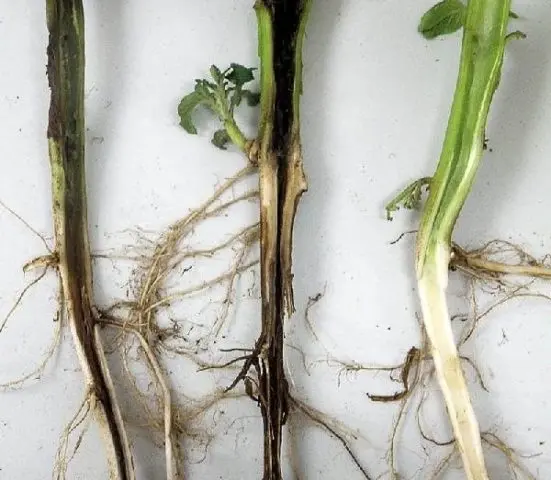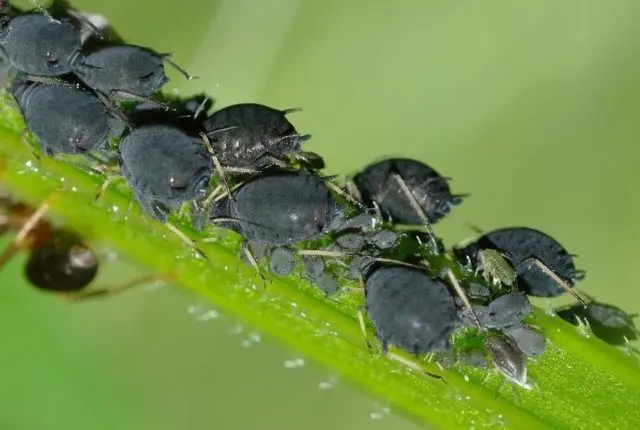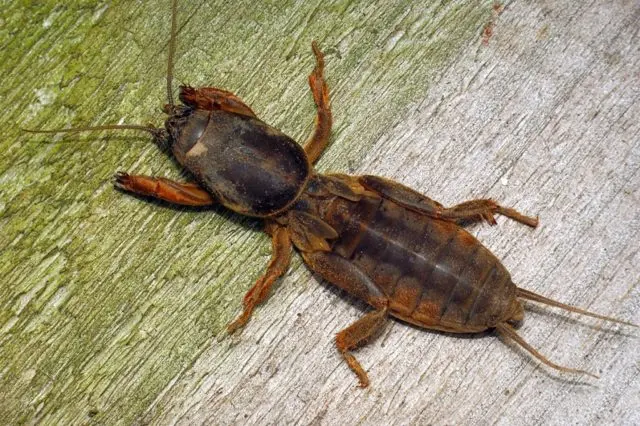Contents
Unusual and spectacular comb celosia is a “fashionista”, the exotic beauty of which can decorate any flower bed. The upper edge of its lush velvety inflorescences is sinuous, shaped like a cockscomb, which gave the second, popular name to this amazing plant. The color of multiple small flowers of comb celosia varies widely from bright yellow to dark red, causing a strong association with flames. In its homeland, in the warm weather conditions of southern Asia, it is a perennial crop, while in temperate countries it is more often grown as an annual ornamental plant.
Celosia comb looks great in the garden, grows well in pots and containers, and is also great for cutting and drying. Its flowering period lasts all summer and ends only with the onset of frost. Currently, a number of varieties of comb celosia are known, bred specifically for the needs of ornamental gardening.
Description of scallop celosia
Celosia silvery comb (popularly known as “cock’s comb”) is the most famous and widespread species in the culture of the genus Celosia of the Amaranth family.
Depending on the variety, this flower can grow from 35 to 70 cm long. Its stems are large, juicy, erect, branched, often fused in several pieces. They can be green or reddish in color.
The leaves of celosia comb are alternate, entire, pointed at the ends. The plates are usually oval or elongated. They are green, burgundy, purple, variegated or golden.
Small flowers of comb celosia are collected in massive complex inflorescences, having the shape of a dense spike, about 8 cm wide. The embossed convolutions along the upper edge give them the appearance of a cockscomb. What the flowers of comb celosia look like can be seen in the photo:
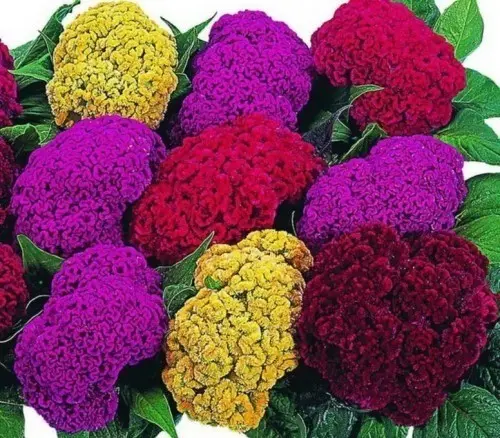
The unusual shape of the comb celosia inflorescences resembles a cockscomb
The palette of their colors is very rich: there are yellow, red, orange, scarlet, pink and even lilac varieties.
Comb celosia blooms for a long time: from the second half of June until the beginning of November.
The fruit of the plant is a box, inside which there are many small seeds.
Top Grades
The variety of this exotic flower will help to present an acquaintance with its most popular varieties. Among them there are dwarf, medium and tall. They differ from each other in size and shape of inflorescences, color of flowers and leaves.
coral garden
Varietal series of comb celosia Coral Garden (Coral Garden) is represented by low plants, the length of the shoots of which usually does not exceed 30-40 cm. Bright colors of “combs” from 10 to 20 cm in width, vary from light yellow to deep fuchsia. The leaves are painted in rich green tones. Most often, the seeds of this celosia comb are sold in the form of a mixture. The coral garden looks great cut and dried.
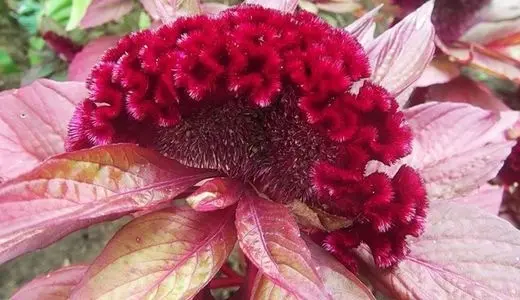
Variety series Coral Garden impresses with a variety of colors
The Empress
Luxurious Empress, or Impress (Empress), also refers to dwarf varieties of comb celosia: the height of its shoots is usually 30 cm. Its distinguishing features are dark green leaves and large burgundy-red “crowns”. It is often grown as a balcony culture.
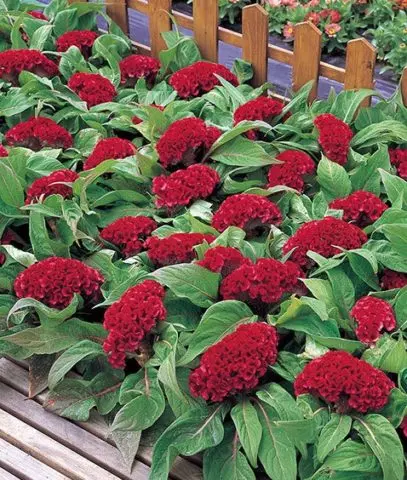
Burgundy-red “crown” of the Empress looks luxurious and majestic
Atropurpura
The variety of celosia comb Atropurpurea (Atropurpurea) does not grow tall – only about 25-30 cm. It is characterized by an unusual color of the stems, combining green and pale pink tones. Very large inflorescences of rich purple-red color are kept at the tops of the shoots. The leaves are oval, light green, with pink veins.

The beautiful Atropurpurea has unusual light green leaves with pink veins.
Application in landscape design
Unusual and elegant “cockscomb” looks wonderful in any corner of the garden, which allows landscape designers to consider this flower a real find. The photos below of comb celosia in the flower beds confirm this.
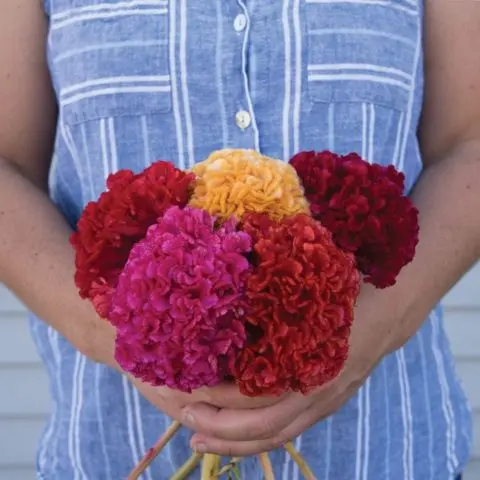
A bright, eye-catching plant fits perfectly into borders and mixborders, looks great both in single and mixed plantings.
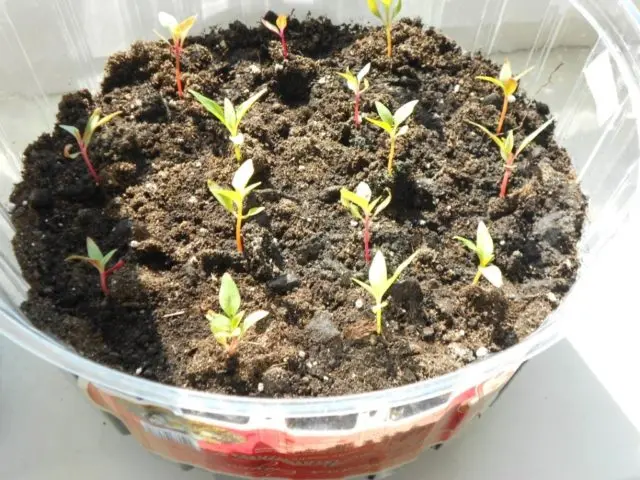
Low-growing varieties of comb celosia will help create a picturesque border along a garden or park path
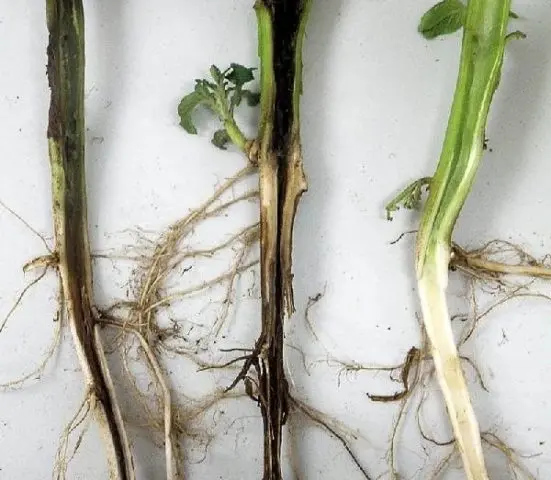
Tall varieties will become a picturesque element of a three-dimensional flower garden, perfectly combined with perennial shrubs, ornamental grasses or any other plants that have a less bright color.
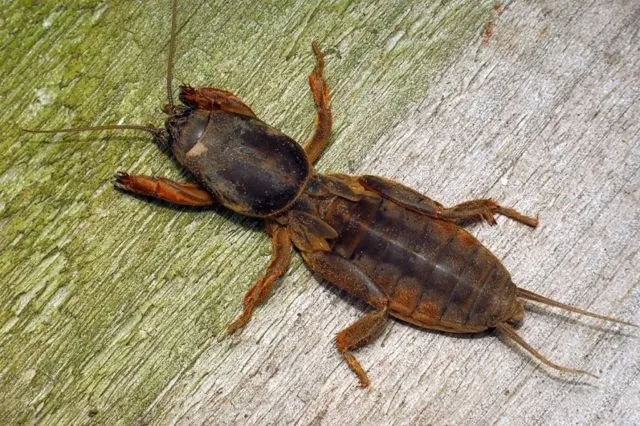
Comb celosia looks very nice growing in a box or container
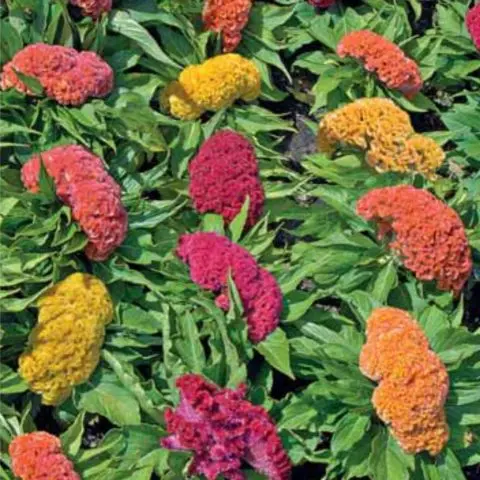
Having planted several varieties of different colors nearby, you can easily get an elegant colorful flower bed that remains decorative for a long time.
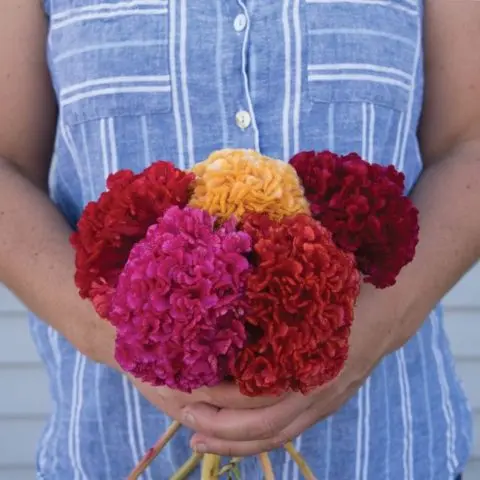
In addition, celosia comb is excellent for cutting and floristic arrangements from both fresh and dried flowers, since its inflorescences are able to retain their shape and color brightness for a long time.
Features of reproduction
You can propagate comb celosia in this way:
- By growing from seed. The most common and easiest way. It involves pre-sowing for seedlings, since the plant is extremely sensitive to the slightest frost, and therefore planting seeds directly in open ground in a temperate climate is not practiced.
- By rooting cuttings. This method is less popular, since the celosia grown in this way often loses its decorative effect, not always retaining the characteristics inherent in the variety. However, if desired, the cuttings should be cut in the spring and placed in a container with a root growth stimulator for several hours. Then they need to be planted in a substrate diluted with sand, covered with a transparent cap and ensured regular watering. After a couple of weeks, the cuttings will grow roots. After that, they can be transplanted to a permanent place or, having waited for consistently warm weather, rooted in a flower bed in the open field.
Growing comb celosia from seeds
Since the seedling method of growing celosia comb from seeds at home is recognized as the most convenient and popular, it is worth dwelling on it in more detail. It will not be difficult to get strong healthy seedlings if you follow some simple rules.
Recommended dates
It is recommended to sow celosia comb for seedlings in the interval from February to early April. In this case, by the time the air temperature outside is stable at + 15-18 ° C, young plants will already be sufficiently developed so that they can be planted under the open sky in a permanent place.
Preparation of containers and soil
It is convenient to use wide shallow containers or boxes as containers for germinating comb celosia seeds. You can also use individual pots or peat tablets, which will allow you to avoid picking seedlings in the future.
The soil mixture should be loose, light and well water-permeable. This is easy to make by mixing garden soil with humus, sand and vermiculite.
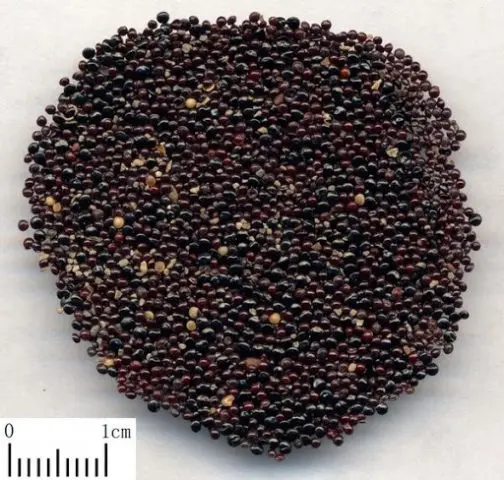
Small seeds of celosia comb in a dense shell must be treated with a biostimulant before planting
Seed preparation
Pre-sowing preparation of seeds of comb celosia involves keeping them for 3-4 hours in a biostimulant solution (Epin, Zircon). Add 1 drop of the drug to a glass of water. This will help soak the dense shells of the seeds and improve their metabolism.
How to plant comb celosia seeds for seedlings
Sowing celosia comb for seedlings is carried out as follows:
- A small layer of drainage is laid at the bottom of the prepared containers, then they are filled with soil mixture.
- Evenly moisten the substrate with a spray bottle.
- The seeds are carefully laid out on the surface of the soil, without closing, but slightly pressing them into the ground.
- Spray the soil again with water from a spray bottle.
- Cover the containers with glass or transparent film and put them on the windowsill, where the seedlings will grow.
Caring for seedlings of comb celosia
Care for crops of comb celosia at the initial stage implies the creation of such conditions:
- maintaining the temperature in the room with seedlings at + 22-25 ° C;
- providing a sufficient amount of diffused light – it is undesirable that the window sill with comb celosia crops be exposed to direct sunlight;
- performing regular, but moderate watering from a spray bottle or pipette, which does not allow overdrying of the soil or its excessive moisture;
- daily ventilation of crops and elimination of condensed moisture from the inside of a transparent shelter.
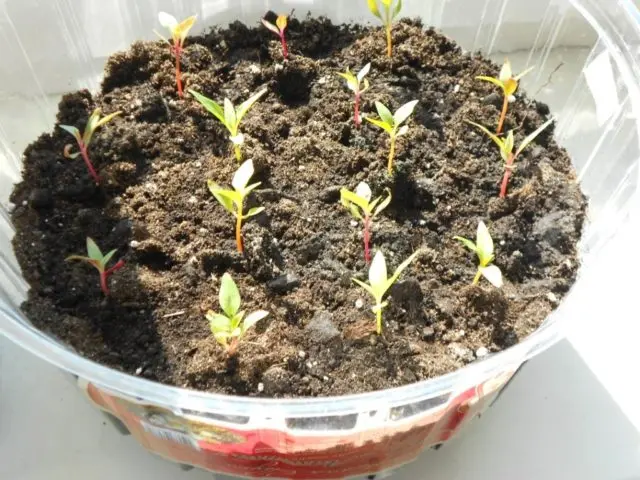
It is not necessary to sow celosia comb for seedlings crowded, it is necessary to leave some space for seedlings to grow.
Planting and caring for comb celosia in the open field
After the seedlings grow up a little, having formed 3 true leaves, they should be transplanted into individual pots with a diameter of about 8 cm. Some gardeners advise picking celosia comb grown in boxes twice, gradually increasing the size of the containers. The transplantation of each seedling is carried out carefully, always leaving a clod of earth on the roots.
At the next stage, the celosia flower, or “cockscomb”, is moved to open ground and provides the plant with the necessary care in a permanent place.
Transplant timing
Plants are transplanted to a garden plot in May or early June. An important condition is the absence of even the most insignificant return frosts and finally established warm weather.
Site selection and soil preparation
A site that is suitable in all respects for comb celosia should:
- well lit by the sun;
- be reliably protected from strong winds and drafts;
- have a loose, nutritious, not very heavy soil with a low level of acidity.
Before transferring seedlings of celosia comb to open ground, it is necessary to prepare a bed:
- A week before the expected date of planting seedlings, the ground on the site should be dug up, adding humus and, if necessary, a little sand.
- A couple of days before the deadline, it is recommended to shed the soil with a light pink solution of potassium permanganate in order to protect against pests.
- If the soil is too acidic, it will need to be limed around this time.

The grown celosia comb with the onset of consistently warm weather can be transplanted to the site
Landing algorithm
Having prepared the site, you can proceed directly to planting comb celosia:
- First, holes for plants should be dug in the ground. The distance between individual specimens of comb tall varieties should be at least 30 cm, dwarf – at least 10-15 cm.
- Carefully remove each seedling from the container along with a clod of earth.
- Set in the hole, carefully distributing the roots.
- Carefully fill the hole with earth, slightly compacting the soil near the stem with your hands.
- Gently water the plant under the root.
Watering and fertilizing schedule
Further care for comb celosia on the site is extremely simple. It is very drought-resistant, but waterlogging, on the contrary, does not tolerate. Based on this, it is advised to water young plants at the initial stage of the growing season regularly, but not excessively. Further, moisture is added to the soil only when necessary, that is, during the dry period, if it becomes noticeable that the leaves begin to turn yellow, and the lush “scallops” gradually lose their decorative effect.
Celosia comb is good for top dressing. However, they should not be overdone either. For example, with an excess of organic matter and nitrogen in the soil, the shoots of the plant will stretch out strongly, and flowering will be scarce. It is advisable to use liquid complex mineral compounds (for example, for plants of the Amaranth family) dissolved in water to feed comb celosia. The schedule of their introduction is 2 times a month.
Pests and diseases
Of the diseases and harmful insects that comb celosia can suffer from, first of all, the following should be noted:
- Fungal diseases. One of the most common and dangerous for comb celosia is the “black leg”. Its causative agent is a fungus of the genus Botrytis. The cause of the disease is too thick plantings, excess moisture in the soil or in the air. Initially, the fungus occupies the base of the stem and develops there, preventing sap flow. The affected celosia comb begins to turn yellow, dry out and quickly dies. Plants with signs of black leg infection must be dug up and burned, and the soil in the place where they were planted should be treated with wood ash. The remaining specimens of celosia comb need to temporarily stop watering. As a preventive measure, seeds and soil are disinfected with a solution of potassium permanganate before planting.

“Black leg” – a fungal disease that occurs in celosia comb due to waterlogging
- Aphid. Colonies of this pest, which feeds on plant sap, often infect comb celosia. At the initial stage of infection, the treatment of the aerial parts of plants with soapy water will help, as well as the search and destruction of anthills located near the beds, since ants contribute to the spread of aphids. If the number of insects is large, chemical insecticides are used to combat them.

At the initial stage, you can fight aphids with folk methods
- Medvedka. These insects living underground often damage the roots of comb celosia, as a result of which the plant withers and dies. In order to combat them, it is recommended to shed the ground in the area with water with dissolved insecticides, or, by mixing them with sweet corn sticks crushed into powder, seal the resulting slurry into the ground. Marigolds planted along the edges of the flower bed are considered a good preventive measure against the bear.

Medvedka is able to gnaw the roots of celosia, due to which the plant can quickly die
Cutting and collecting seeds
In order to collect seeds from comb celosia flowers that can be planted next year, you should do this:
- towards the end of the season, cut off a few inflorescences that are already starting to fade;
- place them in a container (without water) and leave in a dark, cool room;
- shake the dried inflorescences well over the table, on which sheets of clean white paper are laid out;
- separate the seeds from the litter and put them in a tight paper bag or box for storage.
Conclusion
Celosia comb is a very decorative, bright and beautiful seasonal flower. Its strengths are a spectacular, “exotic” appearance, a rich palette of colors of bright inflorescences and leaves, undemanding care, and a long flowering period. In temperate latitudes, this tropical guest is grown as an annual, but it is not difficult to collect seeds at the end of the season in order to decorate the site with intricate “cockscombs” next year.










